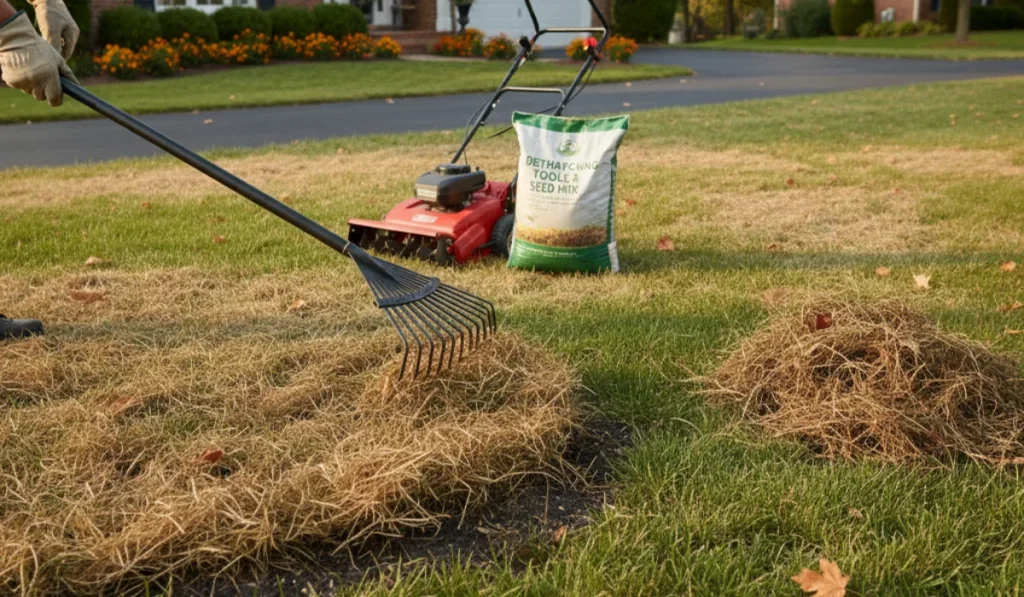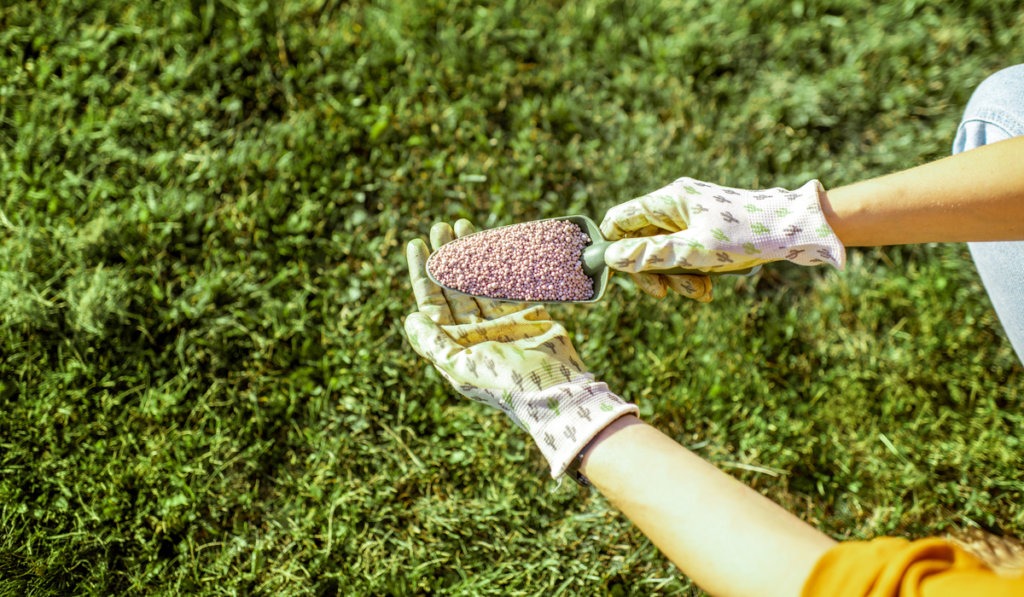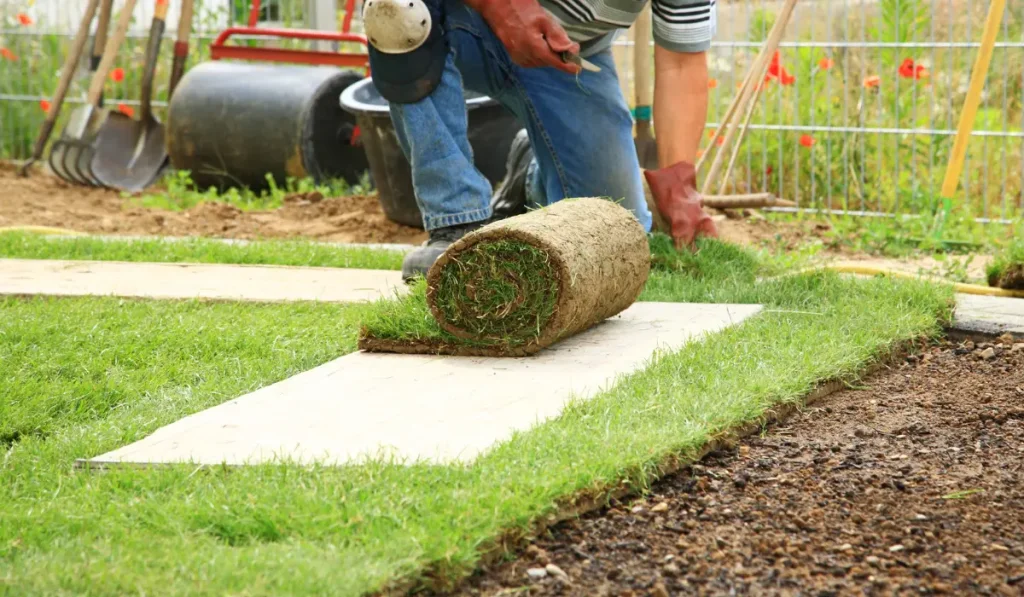Crabgrass is one of the most aggressive and frustrating lawn weeds you’ll face, especially in California’s dry, sun-heavy climate. This grassy weed doesn’t just pop up. It takes over, crowds out your turfgrass, and leaves bare spots in its wake.
Learning how to kill crabgrass the right way will not only save your lawn this year but also help with crabgrass control for next spring and beyond.
Disclaimer: This guide is for informational purposes only. Always consult a licensed professional or local extension office before applying any herbicides.
Key Takeaways
- Crabgrass begins growing in early spring when the soil warms up, so early prevention is key to staying ahead.
- Pre-emergent and post-emergent herbicides work best when applied correctly by professionals who understand your lawn type.
- Healthy grass grows stronger with proper mowing, regular aeration, and seasonal fertilizing to naturally block out weeds.
- Filling bare spots, removing clippings, and skipping DIY remedies all help keep crabgrass from coming back next year.
Understand When Crabgrass Seeds Germinate
Crabgrass is an annual weed that begins its takeover the moment soil temperatures hit the mid-50s. Once conditions are right, the seeds germinate quickly, and the young crabgrass plants grow aggressively.
In most areas of California, this happens around early spring. That’s why your window for effective control begins before you even see the problem.
Apply Pre-emergent Herbicides Before It’s Too Late
One of the most important lawn care steps to prevent an infestation is applying a crabgrass preventer early in the season.
Pre-emergent herbicides, like those containing prodiamine, create a barrier in the soil that stops crabgrass seeds from germinating. Apply it before soil temperatures cross the threshold, and water it in, especially if you’re using a granular formula.
Doing so helps control crabgrass before it can ever get a foothold.
Target Visible Crabgrass With a Selective Post-emergent Herbicide
If you already see crabgrass plants, it’s time for a post-emergent strategy.
Use a selective herbicide containing quinclorac or tenacity to kill crabgrass without damaging your lawn, but always check with a licensed lawn care professional to ensure it’s safe for your grass type and local regulations.
For example, these are generally safe on warm-season options like bermudagrass or St. Augustine, as well as cool-season grasses like tall fescue and bluegrass. Use a sprayer for even application.
For homeowners looking for the best results, professional application of crabgrass killer ensures safe treatment without risking lawn damage.
Improve Mowing Habits for Better Weed Control
Improper mowing can do more harm than good. Mow too low, and you’re creating ideal conditions for crabgrass seeds to germinate.
For cool-season grasses like fescue and bluegrass, aim for 2–3 inches. Bermudagrass, being a warm-season variety, prefers 1.5–2 inches. These heights help shade the soil and reduce the light that triggers crabgrass germination.
Avoid scalping. Excessively short grass allows for more invasive crabgrass infestation.
Aerate and Fertilize to Build a Healthier Lawn
A dense root system gives your grass the upper hand over lawn weeds like crabgrass and dandelions.
Aerating helps relieve soil compaction and allows nutrients, air, and water to reach your turf’s roots. Pair this with a solid fertilization plan tailored to your type of grass, and you’ll strengthen your lawn’s natural defenses.
A healthy lawn is one of the best forms of weed control you’ve got.
Reseed and Overseed to Outcompete Weed Seeds
Crabgrass thrives in weak, patchy lawns. When you reseed or overseed in fall with the right grass seed, you fill in bare spots that would otherwise host weed seeds.
Overseeding with tall fescue works well for cool-season lawns. For warm-season yards, consider using plugs of Bermuda grass or zoysia to fill in bare spots, since these types are typically not grown from seed.
Make sure you give the new grass enough water to establish.
This helps keep your lawn weed-free next year.
Don’t Let Mulch or Clippings Smother Your Lawn
Grass clippings, when properly managed, can help suppress weeds. A thin, even layer left on the lawn after mowing acts like mulch, blocking sunlight, retaining moisture, and returning nutrients to the soil as it decomposes. Just avoid letting clumps build up, which can smother the grass and create bare spots.
If you notice seed heads forming in your lawn weeds or grass blades looking yellowed under clippings, it’s time to start bagging. Late summer is a great time to dethatch and start fresh in trouble zones.
Consider Hand Pulling for Light Infestations
Hand pulling is underrated when you’re only dealing with a few crabgrass plants. It works best after watering or rain, when the soil is soft. Pull slowly to get the full root system, and don’t forget to check nearby spots where seeds may have traveled.
For those practicing organic or DIY lawn care, this is a simple yet effective way to get rid of crabgrass without using chemicals.
Skip the Myths, Some Home Remedies Just Don’t Work
You may have heard about using boiling water, vinegar, or corn gluten meal as a crabgrass killer. These methods might kill weeds on pavement, but they’re often ineffective or damaging to turfgrass.
Non-selective methods like boiling water or Roundup don’t belong in your lawn unless you’re planning a total lawn renovation.
For better results, stick to targeted herbicides and proven lawn care practices.
Frequently Asked Questions
Can I seed and use a pre-emergent herbicide at the same time?
No, most pre-emergent herbicides block all seeds from sprouting, including grass seed. To avoid wasting seed, wait until the herbicide wears off or use products made for seeding situations.
How long does it take for crabgrass to die after treatment?
If treated with a post-emergent herbicide under good conditions, crabgrass usually begins to wilt within three days and dies within two weeks. Rain, temperature, and timing all affect how quickly results appear.
Is it worth removing crabgrass at the end of the season?
Yes, even late in the season. Pulling crabgrass before it drops seed can reduce how much comes back next year. It’s a smart step when you’ve missed early-season control.



